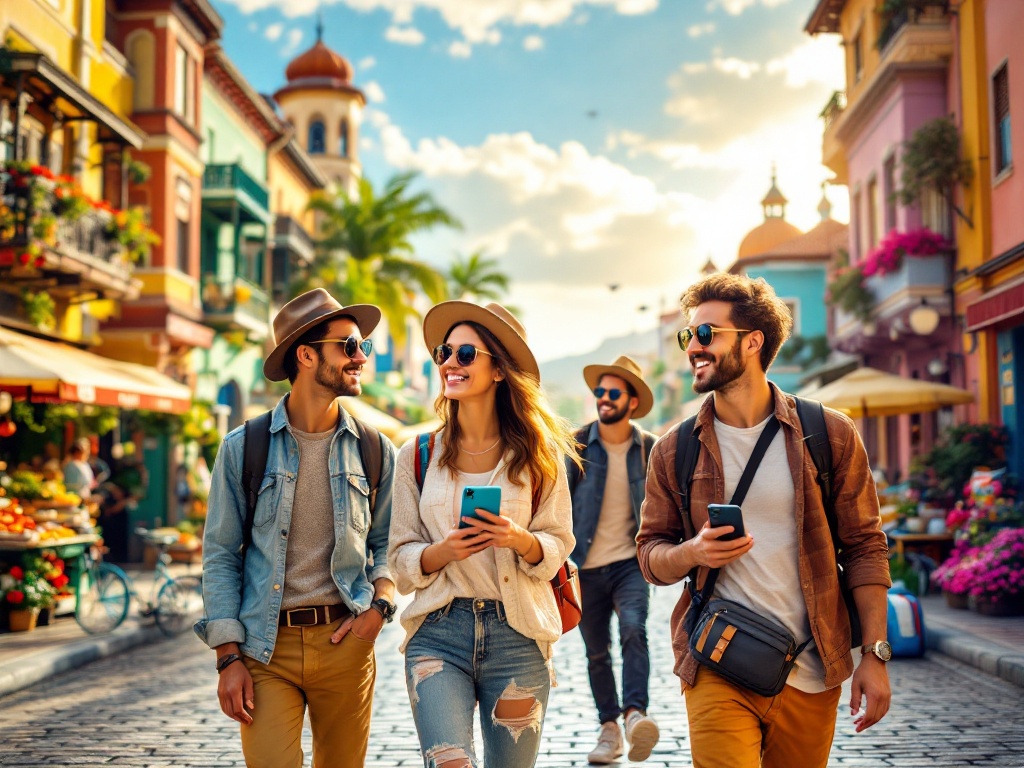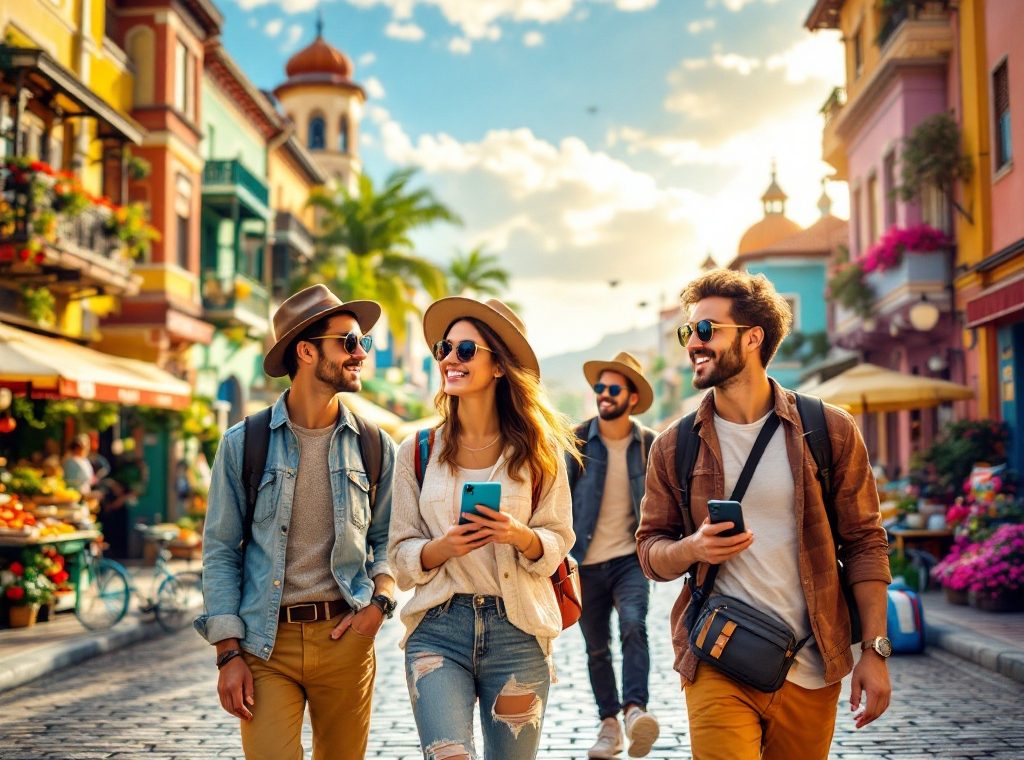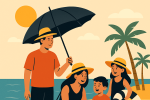Staying Safe Abroad: Tips for a Safe Trip
Traveling abroad? Don’t let safety concerns ruin your adventure. This guide provides essential tips, from understanding local customs and laws to safeguarding your belongings and health. Learn how to blend in, manage your documents, stay connected, and prepare for emergencies. Explore our comprehensive guide now and travel with confidence.
Important information

- Research local laws, customs, and cultural norms to avoid unintentional offenses and ensure a respectful trip. Use resources like travel guides and websites.
- Share your itinerary with someone you trust and make copies of important documents (passport, visa, etc.), storing them separately from originals.
- Prioritize safe transportation. Pre-book reputable services and avoid hitchhiking. Use a money belt or hidden pouch to protect valuables and be mindful in crowded areas.
- Pack a first-aid kit with necessary medications and personal protection items. Consult your doctor about recommended vaccinations and health risks.
- Use a VPN on public Wi-Fi and carry a working international mobile phone with updated emergency contacts. Register your trip with the local embassy (for U.S. citizens, use the Smart Traveler Enrollment Program).
Understanding Traveler Safety Abroad
Your safety abroad depends on your preparedness. Researching local customs and respecting cultural norms ensures a respectful and safe trip. These cultural nuances shape your interactions and overall experience. Learning local etiquette helps avoid unintentional offenses. For instance, greetings and dress codes can vary significantly. Understanding local laws and regulations is also crucial for a smooth journey. Safety encompasses more than just customs. Here’s what you need to consider:
Cultural Awareness
Research the local customs and traditions. Familiarize yourself with appropriate greetings, dress codes, and dining etiquette, paying attention to any specific cultural sensitivities. This shows respect and helps you avoid unintentional offenses.
Legal Knowledge
Understanding local laws and regulations is essential. Be aware of any restrictions on activities, photography, or certain behaviors. Ensure you have the necessary visas and permits for your trip.
Researching Destination Customs and Norms
Planning a trip requires researching local customs for a respectful and safe experience. Consult resources like travel guides, websites, and online forums to learn about local laws, etiquette, dress codes, and common languages. This knowledge prevents misunderstandings and ensures a smoother trip. Check import restrictions beforehand.
Consult travel guides, websites, and online forums to learn about local laws, etiquette, dress codes, and common languages.
Understanding local customs prevents misunderstandings and ensures a smoother trip.
Check import restrictions before your trip.
Essential Safe Travel Tips
Research your destination thoroughly, familiarizing yourself with local customs and laws.
Pre-book transportation with reputable companies.
Prioritize safety by preparing for unexpected issues. Never hitchhike or engage in risky activities.
Safeguard your possessions by securing your hotel room and being cautious with your drinks. Socialize in public areas and dress modestly, avoiding displays of expensive items.
Photocopy important documents like your passport and understand the local currency.
Prepare a well-stocked first-aid kit with necessary medications and personal protection items (if appropriate).
Use a VPN on public Wi-Fi and carry a working international mobile phone with updated emergency contacts.
U.S. citizens should register their trip with the local embassy.
Importance of Having a Safety Plan
A good travel safety plan is essential for peace of mind and preparedness. Before you go, familiarize yourself with local emergency contacts and make copies of important documents. Share your itinerary with a trusted friend or family member. A comprehensive plan should also address potential hazards like theft or natural disasters, outlining appropriate responses to ensure your safety. Here’s a step-by-step guide to creating your own travel safety plan:
Research your destination. Learn about local laws, customs, and any potential safety concerns. Check travel advisories and alerts issued by your government.
Share your itinerary. Provide a detailed itinerary, including flight information, accommodation details, and planned activities, to a trusted contact at home.
Copy important documents. Make copies of your passport, visa, driver’s license, and other essential documents. Store them separately from the originals, both physically and digitally.
Learn basic local phrases. Knowing how to ask for help or directions in the local language can be invaluable in an emergency. Download a translation app to your phone.
Pack a basic first-aid kit. Include essential items like bandages, antiseptic wipes, pain relievers, and any personal medications.
Arranging Safe Transportation
Ensure a smooth arrival by pre-booking your airport transportation to your hotel. Consider reputable airport transfer services or convenient hotel shuttles. After settling in, explore the city using local taxis or the public transport system. Prioritize safe travel throughout your trip.
Avoiding Hitchhiking and Unsafe Practices
Prioritize your safety when traveling. Avoid hitchhiking and never accept rides from strangers. Exercise caution when interacting with unfamiliar people.
Safeguarding Personal Belongings and Room Security
Use the hotel safe to store valuable items like passports and cash.
Secure your luggage with TSA-approved locks.
Keep essential items close to you in a money belt or hidden pouch.
Avoid displaying expensive electronics or jewelry.
Stay aware of your surroundings, especially in crowded areas.
Being Vigilant with Drinks and Meeting in Public Places
Prioritize safety by keeping your drink visible and within reach at all times. When meeting new people, choose well-lit, public areas that offer a clear view of your surroundings.
Maintaining a Low Profile and Cultural Awareness
Traveling safely often depends on blending in. One simple strategy is to dress inconspicuously. Leave the flashy jewelry, expensive watches, and designer clothes at home, these items mark you as a tourist and a prime target for thieves. Instead, choose practical, comfortable clothing to avoid unwanted attention and enhance your security. For example:
- Avoid flashy jewelry, it can attract unwanted attention.
- Leave expensive watches at home, they can make you a target for theft.
- Skip the designer clothes, opt for practical and comfortable attire instead.
This will help you blend in and enhance your travel safety.
Blending In with Inconspicuous Clothing
Dress like a local to avoid unwanted attention.
Inconspicuous clothing reduces your risk of becoming a target for pickpockets and scammers. Opt for neutral colors and consider adopting local styles.
Avoid logos, slogans, and flashy attire that scream “tourist”.
Avoiding Display of Expensive Items
Leave expensive jewelry, watches, and electronics at home, and avoid carrying large amounts of cash. A money belt or hidden pouch is a great way to secure essential items like your passport and credit cards while traveling.
Managing Travel Documents and Currency
Photocopy essential documents. These include your passport, visa, driver’s license, and credit cards. Store these copies separately from the originals, and consider secure digital backups.
Familiarize yourself with the local currency and exchange rates. This will help safeguard your finances.
Notify your bank of your travel dates and destination. This is a crucial step for a smooth trip.
When withdrawing cash, use ATMs at reputable establishments. Always be mindful of your surroundings.
Carry some local currency for everyday purchases. Prepaid travel cards are also a handy option.
Making Copies of Important Documents
Photocopy essential documents, such as your passport, visa, driver’s license, and travel insurance.
Store these copies separately from the originals for safekeeping.
For added security, leave a set of copies with a trusted friend or relative.
Understanding Local Currency and Financial Safety
Familiarize yourself with the local currency to avoid scams.
Informing your bank and credit card companies of your travel dates will prevent any unwanted transaction blocks, ensuring a smoother trip.
Health and Safety Precautions
Assemble a first-aid kit with essential medications and any personal prescriptions.
Include personal protection items like hand sanitizer and masks.
Consult your doctor about recommended vaccinations and potential health risks at your destination.
Consider travel insurance that includes health coverage.
Research local healthcare facilities before you go.
If the local water is unsafe, opt for bottled water and exercise caution with street food.
Stay hydrated and practice good hygiene for a healthy and enjoyable trip.
Bringing a First Aid Kit and Necessary Medications
A well-stocked first aid kit is essential for handling minor injuries during travel. Pack essential items such as bandages, antiseptic wipes, and pain relievers. Remember to include any prescription medications, which are vital for your health while traveling.
Over-the-counter remedies, like antidiarrheals and allergy medicine, can be invaluable for common travel ailments.
With a little preparation, you can manage most minor medical issues during your trip.
Packing Personal Protection Supplies
Pack essential items for your health and safety, such as hand sanitizer, disinfectant wipes, and face masks. A personal safety alarm is also recommended for added security. Don’t forget insect repellent and sunscreen for protection against the elements.
Communication and Connectivity
Enhance your security on public Wi-Fi by using a VPN to protect your personal information.
A charged mobile device is essential for communication and accessing important travel apps.
An international phone is crucial for staying connected with family and friends, contacting emergency services, and confirming bookings.
Using a VPN for Public Wi-Fi Safety
A VPN encrypts your internet traffic, shielding your data from hackers, particularly on public Wi-Fi. This safeguards sensitive information like passwords and financial details by creating a secure tunnel for your data, making it nearly impossible for anyone to intercept. Browse with confidence knowing your online activity and sensitive information are protected.
Carrying an Internationally Functioning Mobile Phone
Staying connected while traveling internationally is easier than ever thanks to mobile phones and helpful apps. However, a little planning goes a long way. While international roaming is convenient, the costs can quickly add up. A local SIM card is a budget-friendly alternative, or you might consider a portable Wi-Fi hotspot. Each option has its own advantages and disadvantages, so choose what best fits your travel style and needs.
International Roaming
Convenient, works with your existing phone, but expensive.
Local SIM Card
Cost-effective, provides local number, may require unlocking your phone.
Portable Wi-Fi Hotspot
Connects multiple devices, offers good value, requires carrying an extra device.
Solo and Group Travel Safety
Traveling alone? Share your itinerary with a friend or family member and check in regularly for added safety. Pre-booking accommodations and transportation, particularly for late arrivals, is also a wise precaution. At night, stick to well-lit and populated areas.
Traveling Solo
- Share your itinerary with a trusted contact.
- Check in regularly with your contact.
- Pre-book accommodations and transportation, especially for late arrivals.
- Stay in well-lit and populated areas at night.
Traveling in a Group
- Establish meeting points and times in case of separation.
- Maintain open communication about plans and concerns.
- A group of 3-5 people is generally ideal for security.
- Larger groups require clear communication and decision-making.
- Ensure everyone’s voice is heard in the group.
Safety Tips for Solo Travelers
Before embarking on your trip, leave a detailed itinerary with a trusted friend or family member. Keep them updated on your travels and share your location regularly. If possible, use your phone’s live location sharing feature with your emergency contact for added safety. This can be incredibly helpful in unexpected situations.
Emergency Preparedness and Planning
Ensure your emergency contacts are up-to-date, including family, friends, and your physician. Keep this information readily accessible both on your phone and in a written format.
Register your travel plans with the Smart Traveler Enrollment Program (STEP) offered by the U.S. Department of State. This complimentary service provides alerts and assists the embassy in contacting you during emergencies.
Keeping Emergency Contacts Updated
Before you travel, take these safety precautions:
- Inform a family member or housemate about your itinerary, including your destination and planned activities.
- Provide contact details for your accommodations and transportation.
- Arrange regular check-ins to reassure them of your safety.
- Leave a copy of your passport and other important travel documents with a trusted individual.
Registering Your Trip with Local U.S. Embassy
For your safety, register your trip with the nearest U.S. embassy or consulate. This enables them to assist you during emergencies and provide important updates regarding safety conditions at your destination. The U.S. government offers a free service called the Smart Traveler Enrollment Program (STEP) for U.S. citizens traveling or living abroad.
















